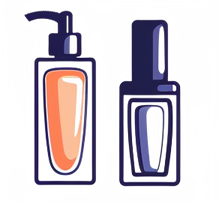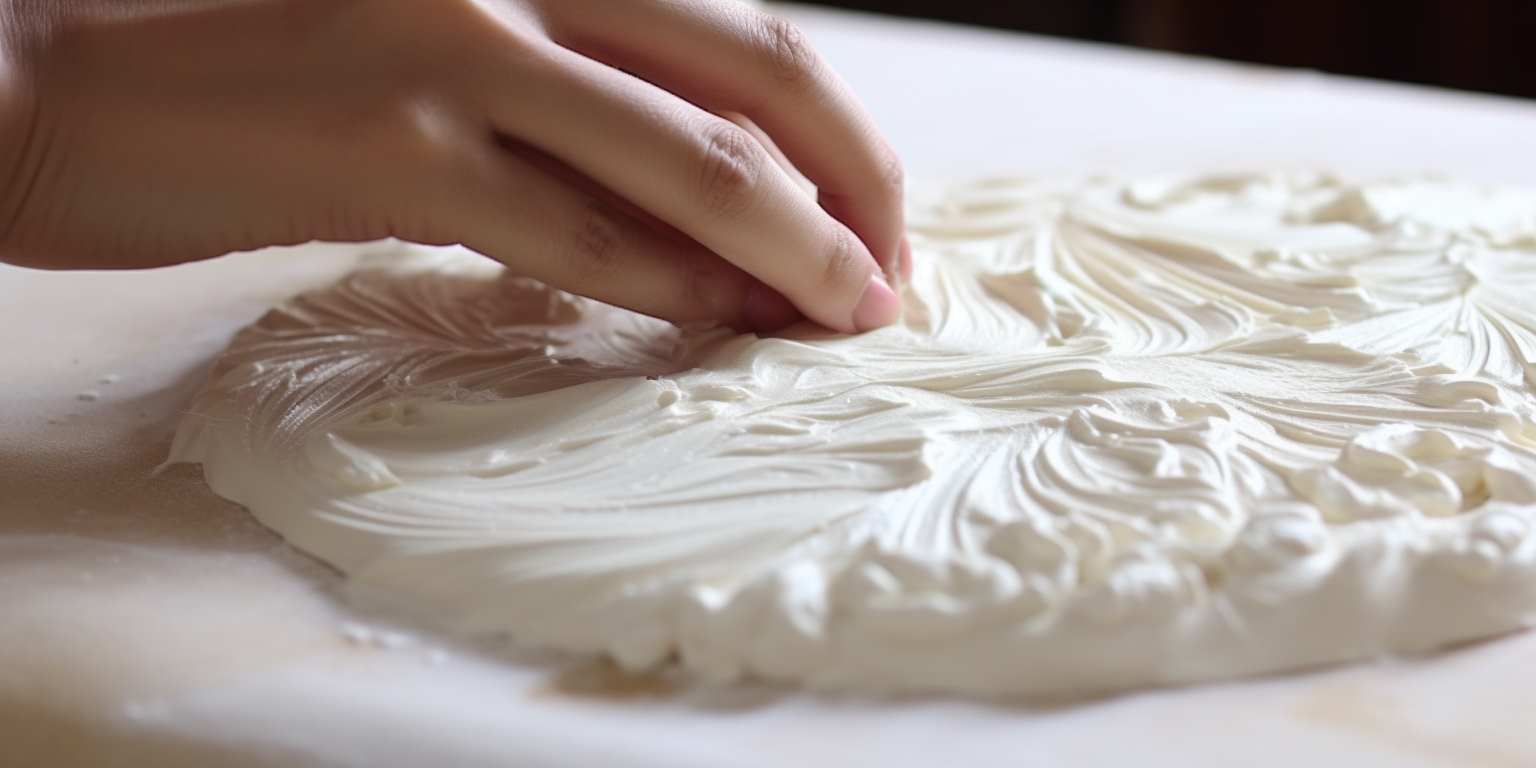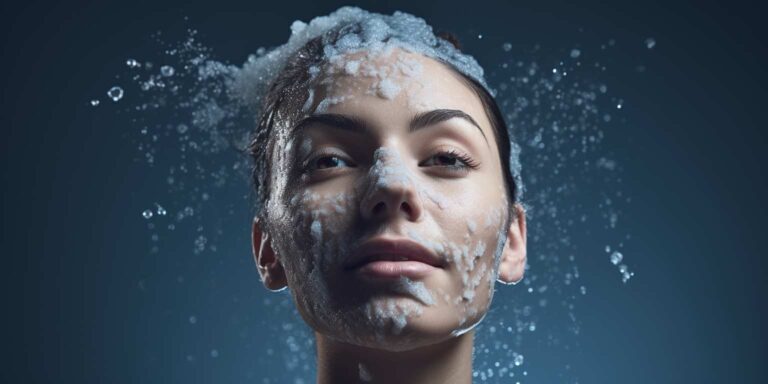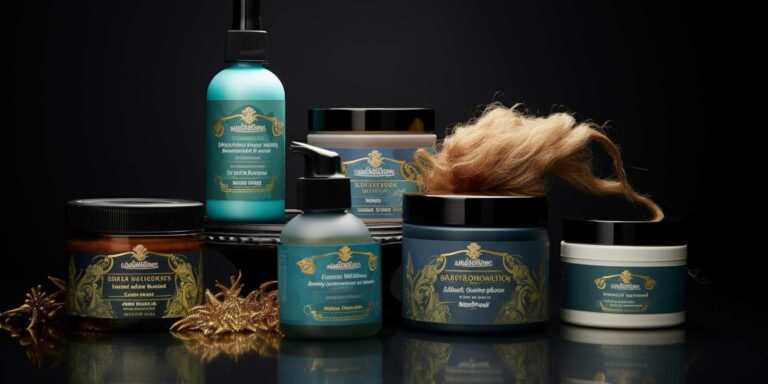Everything you need to know about homemade dry shampoo
Ingredients: Typical ingredients for homemade dry shampoo include cornstarch, arrowroot powder, baking soda, cocoa powder (for dark hair), and essential oils for fragrance. These ingredients are affordable, accessible, and allow for personalization based on hair color and scent preferences.
Benefits: Homemade dry shampoo provides several benefits. Firstly, it extends the time between hair washes, reducing the need for frequent washing, which can strip the hair of its natural oils. Secondly, it’s environmentally friendly as it reduces reliance on aerosol cans and plastic packaging. Additionally, homemade dry shampoo is gentler on the scalp as it often contains fewer harsh chemicals compared to commercial alternatives.
How to Make: Making homemade dry shampoo is a simple process. Begin by selecting your base ingredient, such as cornstarch or arrowroot powder. For light hair, these are suitable on their own. For darker hair, add cocoa powder to match the color. Combine the ingredients in a bowl or container and mix thoroughly. For fragrance, add a few drops of essential oil and mix again. Store the mixture in a shaker bottle or airtight container for easy application.
Application: To apply homemade dry shampoo, section your hair and sprinkle a small amount of the mixture onto the roots. Use your fingertips or a brush to distribute the powder evenly, focusing on areas prone to oiliness. Allow the dry shampoo to absorb excess oil for a few minutes, then brush or massage it through your hair to remove any residue.
Benefits of using homemade dry shampoo
Homemade dry shampoo is a versatile and cost-effective alternative to commercial products that offers a plethora of benefits. Whether you’re looking to save money, reduce chemical exposure, or simply extend the time between hair washes, homemade dry shampoo could be the answer to your hair care woes.
Benefits of using homemade dry shampoo:
| Benefits | Explanation |
|---|---|
| 1. Cost-effective | One of the most appealing aspects of homemade dry shampoo is its affordability. Most homemade recipes utilize common household ingredients such as cornstarch, baking soda, or oatmeal, which are significantly cheaper than store-bought alternatives. |
| 2. Chemical-free | Commercial dry shampoos often contain a cocktail of chemicals and additives that may strip the hair of its natural oils or cause irritation to the scalp. Homemade versions allow you to control the ingredients, ensuring a chemical-free and gentle cleansing experience. |
| 3. Convenient | Homemade dry shampoo can be tailored to suit your specific hair type and preferences. Whether you have light or dark hair, oily or dry scalp, there’s a recipe out there for you. Plus, you can make a batch in advance and store it for future use, making it convenient for busy lifestyles. |
| 4. Absorbs excess oil | The primary function of dry shampoo is to absorb excess oil from the scalp, refreshing your hair between washes. Ingredients like cornstarch and arrowroot powder are adept at soaking up oil and leaving your hair looking and feeling clean and voluminous. |
| 5. Adds volume and texture | Besides banishing grease, homemade dry shampoo can also add volume and texture to your hair. By lifting the roots and adding a bit of grip, it can help create effortless and tousled hairstyles without the need for additional styling products. |
| 6. Environmentally friendly | Reducing our carbon footprint is becoming increasingly important, and homemade dry shampoo aligns with this ethos. By using natural, biodegradable ingredients, you’re minimizing the environmental impact compared to purchasing products packaged in plastic containers. |
Simple recipes for homemade dry shampoo
Looking to refresh your hair without the hassle of a full wash? Dry shampoo is your go-to solution! Whether you’re pressed for time or simply aiming to extend the life of your hairstyle, homemade dry shampoo offers a natural and cost-effective alternative to store-bought options. Plus, you can customize it to suit your hair type and scent preferences.
Here are a few simple recipes to get you started:
| Recipe | Ingredients | Instructions |
|---|---|---|
| Cornstarch-Based Dry Shampoo | – 2 tablespoons cornstarch | – Pour cornstarch into a clean container. – Add essential oils (optional) for fragrance. – Mix well and store in a shaker bottle. – Apply to roots and massage in, then brush out excess. |
| Baking Soda Dry Shampoo | – 1 tablespoon baking soda | – Combine baking soda with 1 tablespoon of cocoa powder for dark hair (optional). – Add a few drops of essential oils for fragrance. – Mix thoroughly and transfer to a shaker container. – Apply to roots, let sit for a few minutes, then brush out. |
| Oatmeal Dry Shampoo | – 2 tablespoons ground oats | – Grind oats into a fine powder using a blender or food processor. – Mix with 1 tablespoon of baking soda. – Add essential oils for scent, if desired. – Store in a shaker bottle and apply to roots as needed. |
These DIY dry shampoo recipes are quick and easy to make, using ingredients you likely already have in your pantry. They absorb excess oil, freshen up your hair, and add volume without the need for water. Plus, they’re gentle on your scalp and free from harsh chemicals found in many commercial products.
How to apply homemade dry shampoo
Dry shampoo is a lifesaver on those days when washing your hair seems like an insurmountable task. Whether you’re short on time, water, or just looking to extend the life of your blowout, homemade dry shampoo can be your best friend. Not only is it convenient, but it’s also eco-friendly and budget-friendly.
Making your own DIY dry shampoo is surprisingly simple and requires just a few ingredients that you probably already have in your kitchen. The main ingredient is usually some form of absorbent powder like cornstarch, arrowroot powder, or rice flour. These powders work to soak up excess oil from your scalp, leaving your hair looking and feeling fresh.
To apply homemade dry shampoo, start by sectioning your hair and sprinkling a small amount of the powder directly onto your roots. Massage the powder into your scalp using your fingertips, focusing on areas that tend to get the oiliest. Let the dry shampoo sit for a few minutes to absorb the oil, then brush or comb through your hair to distribute it evenly.
If you have dark hair, you may find that traditional dry shampoo leaves behind a white residue that’s difficult to blend in. To avoid this, try adding cocoa powder or activated charcoal to your homemade dry shampoo mixture. These ingredients will help to darken the powder and make it less noticeable on dark hair.
Essential oils are another great addition to homemade dry shampoo. Not only do they add a pleasant scent to your hair, but they also have beneficial properties for your scalp. Tea tree oil, for example, has antifungal and antibacterial properties that can help to keep your scalp healthy.
Once you’ve applied the dry shampoo, style your hair as usual. You can leave it down for a tousled look or put it up in a sleek bun or ponytail. The beauty of dry shampoo is that it adds texture and volume to your hair, making it easier to style and giving it that extra oomph.
When it comes to storing homemade dry shampoo, a small shaker bottle or jar works well for easy application. Just make sure to keep it tightly sealed when not in use to prevent moisture from getting in and spoiling the mixture.
Best ingredients for homemade dry shampoo
Dry shampoo has become a lifesaver for those hectic mornings or when you just need a quick refresh without a full wash. Crafting your homemade dry shampoo can be both economical and beneficial for your hair health, provided you choose the right ingredients. Let’s delve into some of the best ingredients for concocting your personalized dry shampoo.
Cornstarch: This pantry staple is a star ingredient in DIY dry shampoo. Its fine texture helps to absorb excess oil from the scalp, leaving your hair looking and feeling refreshed. Cornstarch is gentle on the scalp and works well for most hair types.
Arrowroot Powder: Similar to cornstarch, arrowroot powder is another excellent oil-absorbing agent. It’s particularly beneficial for those with sensitive skin or scalp as it has a softer texture and is less likely to cause irritation.
Baking Soda: While baking soda can be effective in combating greasiness, it’s essential to use it sparingly. Overuse of baking soda can disrupt the natural pH balance of the scalp, leading to dryness and irritation. If included, it’s recommended to use it in small quantities or dilute it with other ingredients.
Essential Oils: Adding a few drops of essential oils not only enhances the fragrance of your dry shampoo but also offers additional benefits for your hair and scalp. Lavender, rosemary, peppermint, and tea tree oil are popular choices. These oils not only impart a pleasant scent but also have antimicrobial properties that can help keep the scalp healthy.
Cocoa Powder or Cinnamon: For those with darker hair, cocoa powder or cinnamon can be excellent additions to your DIY dry shampoo. They help to blend the white residue of other ingredients, ensuring your hair looks fresh without any noticeable color difference.
Activated Charcoal: If you struggle with oily hair or scalp issues like dandruff, activated charcoal can be a game-changer. It effectively absorbs excess oil and impurities from the scalp, promoting a cleaner and healthier environment for hair growth.
Rice Flour: This lightweight flour is another alternative for absorbing oil and adding volume to your hair. It’s finely milled and gentle on the scalp, making it suitable for regular use.
| Ingredient | Benefits |
|---|---|
| Cornstarch | Effective oil absorption |
| Arrowroot Powder | Gentle on sensitive skin |
| Baking Soda | Oil control (use sparingly) |
| Essential Oils | Fragrance and scalp benefits |
| Cocoa Powder or Cinnamon | Blends with darker hair |
| Activated Charcoal | Oil and impurity absorption |
| Rice Flour | Lightweight oil absorption |
Storing your homemade dry shampoo
When it comes to storing your homemade dry shampoo, ensuring its longevity and effectiveness is paramount. Whether you’ve crafted a cornstarch-based blend or a luxurious cocoa powder concoction, proper storage is key to maintaining its freshness and efficacy.
Containers: Selecting the right container for your homemade dry shampoo is crucial. Opt for an airtight container to prevent moisture from seeping in and compromising the formula. Glass jars with tight-fitting lids or aluminum tins work exceptionally well, keeping your dry shampoo free from humidity and environmental contaminants.
Dark and Cool: Light and heat can degrade the ingredients in your dry shampoo, diminishing its effectiveness over time. Store your homemade blend in a cool, dark place away from direct sunlight. A cupboard or drawer in your bathroom or bedroom provides an ideal environment, ensuring your dry shampoo remains potent for longer.
Absorbent Materials: Placing an absorbent material such as rice or silica packets in the storage container can help to further protect your homemade dry shampoo from moisture. These materials absorb excess humidity, preserving the integrity of the formula and extending its shelf life.
Labeling: Properly labeling your container is essential, especially if you have multiple homemade beauty products in your collection. Clearly indicate the contents and date of preparation on the label to track its freshness and potency. Additionally, include any specific instructions or ingredients to ensure safe and effective usage.
| Containers | Dark and Cool | Absorbent Materials | Labeling |
|---|---|---|---|
| Glass jars or aluminum tins | Store away from direct sunlight | Rice or silica packets | Clearly label contents and date |
Troubleshooting homemade dry shampoo issues
Creating your own dry shampoo at home can be a game-changer in your beauty routine, offering a quick fix for greasy hair days. However, like any DIY project, it’s not always smooth sailing. If you find yourself facing issues with your homemade dry shampoo, fear not! Let’s troubleshoot common problems and find solutions to ensure your homemade hair refreshment concoction works like a charm.
One common issue is the white residue that homemade dry shampoos can leave behind. If your hair is looking more powdery than refreshed, consider tweaking the ingredients. Opt for finely milled ingredients like cornstarch or arrowroot powder to avoid the chalky aftermath. Additionally, make sure to blend the ingredients thoroughly before application, ensuring an even distribution on your scalp.
Another stumbling block is the lack of oil absorption. If your DIY dry shampoo seems ineffective in soaking up excess oils, it might be time to introduce some oil-absorbing powerhouses. Add a few drops of essential oils like tea tree or lavender to enhance the oil-absorbing properties of your dry shampoo. Remember, balance is key; too much oil can weigh down your hair.
If you find your homemade dry shampoo clumping or becoming difficult to apply evenly, consider adjusting the texture. Adding a bit of finely ground oats or almond meal can improve the texture, preventing clumps and ensuring a smooth application. Experiment with ratios until you achieve the desired consistency.
It’s not uncommon for DIY dry shampoos to have an overpowering fragrance. While a pleasant scent is desirable, an overly strong aroma can be off-putting. Opt for subtle scents like rosemary or peppermint, and always test the fragrance intensity before applying. You want a hint of freshness, not an overwhelming perfume cloud.
For those experiencing scalp irritation, it’s crucial to identify the culprit ingredient. Common irritants include citrus oils or heavy fragrances. Switch to hypoallergenic alternatives such as calendula oil or unscented options. Your homemade dry shampoo should rejuvenate, not irritate.
Now, let’s break down some troubleshooting tips into a handy table for quick reference:
| Issue | Solution |
| White Residue | Use finely milled ingredients; blend thoroughly. |
| Lack of Oil Absorption | Add essential oils for enhanced oil absorption. |
| Clumping | Adjust texture with finely ground oats or almond meal. |
| Overpowering Fragrance | Opt for subtle scents like rosemary or peppermint. |
| Scalp Irritation | Identify and switch irritant ingredients. |







